#phrenology
Text
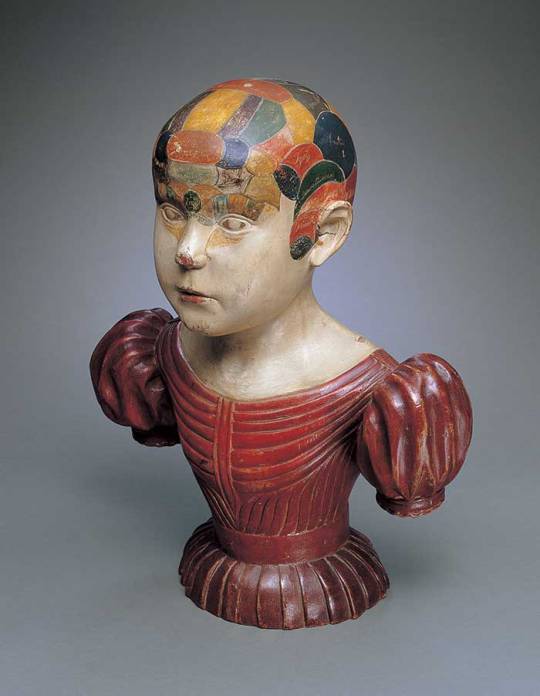
Asa Ames
Phrenological Head, c. 1850
Paint on wood
16 3/8 x 13 x 7 1/8"
Collection American Folk Art Museum, New York
Bequest of Jeanette Virgin, 1981.24.1
289 notes
·
View notes
Video
That’s so smooooth!
Source
#phrenology#tradition#interesting#claymation#quentin tarantino#animations#fuckin loop#extreme violence#lol#shitvideo
577 notes
·
View notes
Text

Today in Hip Hop History:
The Roots released their fifth album Phrenology November 26, 2002
#today in hip hop history#todayinhiphophistory#hiphop#hip-hop#hip hop#music#history#hip hop music#hip hop history#hip hop culture#music history#the roots#phrenology#album#emcee#mc#rap#rapper#philly#philadelphia#black thought#?uestlove#questlove#2002#band
74 notes
·
View notes
Photo
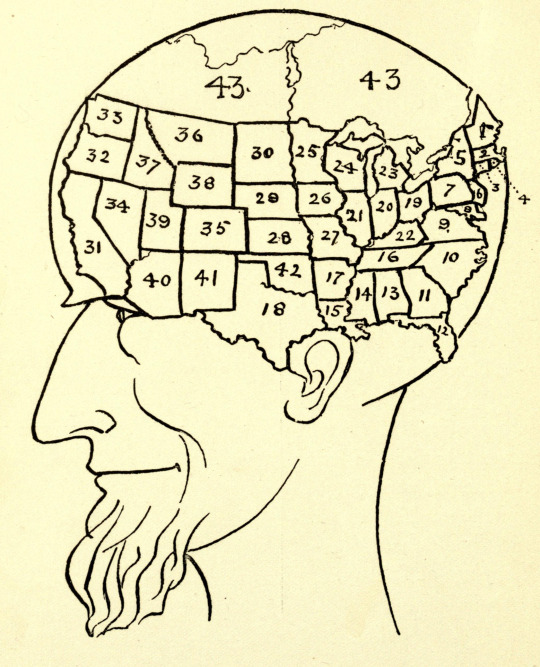
Source details and larger version.
Though off to a bumpy start: my collection of vintage phrenology imagery is heads above the rest.
141 notes
·
View notes
Text
youtube
Something called "face-reading" is trending on tiktok and its ... it's phrenology folks!!!! It's literally just phrenology.
So, in an attempt to remind people that phrenology is bad and racist, I am re-sharing this video on human remains, phrenology, and unethical anthropologists 🙃
56 notes
·
View notes
Text
So It's come to my attention that Phrenology and Physiognomy have made a comeback under the name of "Face Reading"
So my half conscious self has been dragged out of the abyss because I need you to understand why this is EXTREMELY BAD on so many levels. I'm gonna try and give you resources so you can educate yourself on the topic, but my brain isn't wording right today, so I'm sorry.
If you're younger, this is a part of the past you need to know because it's repeating itself now due to ignorance.
Phrenology and Physiognomy became super popular after Darwin's theory of evolution came out and bigots essentially used it to prove that they were "superior". People would do it for "fun" back then also, and the manuals that taught how to do it, or talked about it in depth can be kind of unsettling to look at due to the blatantly racist and antisemitic caricatures that you find in them. And we're not even going into how awful the texts can be.
I don't have enough brainpower at the moment to poke at that, but suffice to say, it's bad enough that the Nazis used physiognomy to push their agenda and murder millions during the holocaust. As well as take measurements of people during "Racial Examinations." These tests were used to supposedly determine if someone was Jewish or not, just take a look at these photos and keep in mind that if you didn't align to their "pure aryan" standards, you'd wind up persecuted and/or killed.:
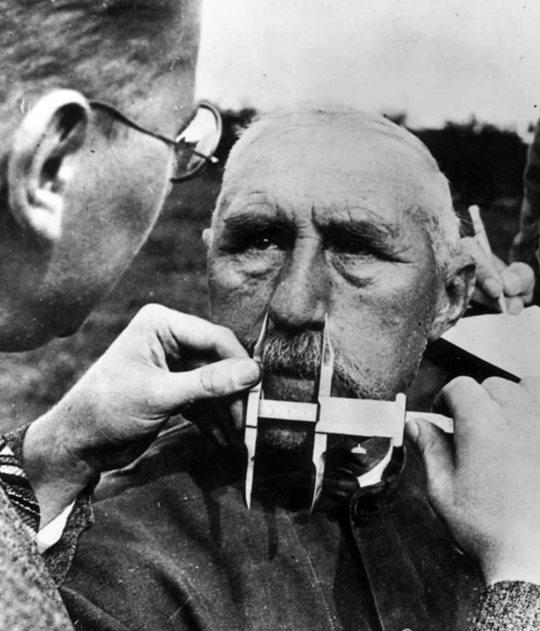


There's more photos out there than this, it's been heavily documented.
Anyways Face Reading/Physiognomy and Phrenology have always been used as racist propaganda. Don't do this or buy into it, please. It seems cute and harmless but it's not, not in the slightest, and just pushes more awful stereotypes out there.
This video talks more in depth about it than I can.:
youtube
I'm also posting more articles for further reading so as to educate yourselves on the topic. Keep in mind you will be seeing racist white supremacist propaganda and it can be unsettling.
Wikipedia Article on Physiognomy
History.com Article on the way Face Reading and Phrenology was used to basically assume some people were criminals.
Genome.gov article on Eugenics and Scientific Racism.
Penn Museum Article on Craniology in Race Science and Physical Anthropology
The United States Holocaust Museum article on Eugenics.
Scientific Racism Entry on Wikipedia
Nazi Eugenics Entry on Wikipedia
University of Missouri articles on the Origins of Eugenics.
A final word. Judging people based on their appearances never ends well, and in extreme situations leads to innocent people getting killed far more often than many of you realize due to racism, ableism, transphobia, and so on.
I'm no history expert, so these articles are all I can give you. If this can motivate you to start your journey to learning history so we don't repeat it, I've done my job.
Now I'm going back into the void, it's sleep time.
#history#eugenics#face reading#physiognomy#phrenology#racism#antisemitism#please learn your history so we don't have to do this again.#Youtube#tweedle talks
87 notes
·
View notes
Text
This is not a mystical or spiritual diagram. It does not symbolize any religious beliefs. It is OLD SCIENCE.

I understand if you want to make an inspirational, guru-style, spiritually uplifting (or exploitative) article or video about your mystical beliefs. I'm sure it will be very life-changing for your viewers and they will love it. But I have no idea why you'd use one of these in the thumbnail for it. This is a phrenology head model.
THIS IS OUTDATED BRAIN SCIENCE FROM THE 1800'S AND THE PEOPLE WHO WERE USING IT THOUGHT THEY WERE DOING REAL SCIENCE. FOR REAL.

They were not hooking it up to the zodiac, they were not reading auras, they were not casting spells or manifesting something or whatever. They were not associating it with a spirit or deity or religious act. They were analyzing what they thought was the shape of your brain and how well different areas of the brain that (purportedly) did different things in your life were developed and how well they were functioning. Model phrenology heads were a diagnostic tool for a type of medicine that is no longer practiced. It was a step in the progression towards what eventually became real brain lobe science in modern times. It was also used for eugenics! Anyone who knows what it is will look at your thumbnail and think: "oh boy, they don't even know what this weird science and eugenics tool was actually used for, THAT'S KINDA AWKWARD!"
Oh I know! You're mixing it up with these things, aren't you?

This is a guide for palmistry, a way of reading the lines and marks on your hand to see what's up with you mystically. What's up, danger? What's going down with the planets and the spirits? How your marriage is gonna go and stuff like that. I get that they look similar and that sometimes people photograph them together, but palmistry has never purported to be a science and is a method of divination like aura reading. Stick a palmistry hand in your woo-woo spirit guidance article/video thumbnail, that at least is in the same INDUSTRY as your subject matter.
If you stick a phrenology head on your thumbnail you are saying: "I have no idea what this is actually for, but I think it's kind of mystical-looking and the stock image was free, and I don't actually take any of my subject matter seriously, because this is all a cash cow." And hey! It's a good flag to wave around so that people in the know can avoid your content so, in that case, I guess keep it up!
72 notes
·
View notes
Text
The stratificatory aspects of the use of cultural forms like astrology have intriguing connections with social change, especially as such forms transfer the ideas of one social class or age to another. A comparative example is the working class fascination with phrenology in Victorian England. It was through the medium of phrenological instruction, which Victorian working men often received at Mechanics' Institutes and from the popular press, that their class came to understand many of the assumptions and implications of eighteenth-century rational and materialist philosophy. For example, the phrenological notion that one can, by evaluating the bumps on one's skull, learn of and thereby cultivate one's strengths, is a neat application of the Enlightenment confidence in the perfectability of man. Sinhalese astrology is a similar working out of abstract notions about reality and human nature, namely the leeway a person has to alter his karmic destiny. What is important is that both phrenology and astrology reduce cultural notions to practicable schemata for directing human action and evaluating it, and thus bridge a substantial gap for actors, not to say social scientists.
David Pingree, Sinhalese Astrology, South Asian Caste Systems, and the Notion of Individuality
69 notes
·
View notes
Text
Gueulemer as a "Créole"; Race in Les Misérables
When Gueulemer is first introduced to readers in Les Misérables, Hugo is quick to announce that the character was thought to be a “créole”; or “creole” in English translations of the text.
With this “creole” status, it is probable that Gueulemer is not a wholly white, European character— unlike the majority of the other figures that feature in the novel. This raises questions about his attributes and whether they reflect the racist stereotypes and opinions widely held by European society during the nineteenth-century.
Examining Gueulemer's characteristics within the context of race and racist "racial science" in the nineteenth-century contributes to important questions about racial stereotypes and prejudices in Les Misérables. As such, this character serves as a compelling case study to explore how the pervasive racism collectively integrated into European society at this time may have (knowingly or unknowingly) influenced certain aspects of the novel.
Below, I have attempted to analyse Gueulemer’s character traits within the relevant historical contexts to illustrate how his attributes likely originate from a series of racist stereotypes.
*Please be aware that the following post includes sources originating from the nineteenth-century that contain discriminatory and racist language. While I do not condone the use of such language, I have chosen not to alter the sources in order to present them accurately in their original form. All discriminatory language mentioned in the below post is written with quotation marks to highlight that these phrases appear directly in Les Misérables itself.*

“Creole”; A Complex Term
It should first be noted that the term “creole” encompasses a wide range of different ethnic groups. In the footnotes of Julie Rose’s Les Misérables translation, “creole” is defined as “a European born in the tropics, usually in the Caribbean”. However, this definition overlooks many of the other groups that also were considered “creole”. Moreover, it conveniently ignores the fact that “creole” individuals are not necessarily white. In fact, during the eighteenth and nineteenth-centuries, “creole” people were often understood/stereotyped as mixed-race immigrants.
Many creoles were thought to be the offspring of the plaçage custom, wherein white men were permitted to form relationships with women of colour in French and Spanish slave colonies in North America and the Caribbean.
Thus, it is entirely plausible that Gueulemer is mixed-race. Although, it should be noted that Hugo writes that the character was "thought to be a creole”— it is never formally confirmed in the novel. Nonetheless, Gueulemer's physical appearance and personality traits align with numerous racist stereotypes of the time that were commonly held by white, European society towards black and mixed-race individuals.
With Hugo insinuating that Gueulemer is mixed-race and has Caribbean ancestry, he (intentionally or unintentionally) applies a set of preconceived racial notions onto the character. To put it another way— even if Gueulemer is not actually a “creole”, his appearance and personality align with society's racist preconceptions of how a “creole” looks and acts. This is a critical factor to consider when analysing Gueulemer's character in the context of racism and racial perceptions in the nineteenth-century.
The Stereotyped “Creole” Appearance
As previously mentioned, one of the most prominent stereotypes surrounding "creoles" was that they were mixed-race and that they possessed physical characteristics that differed from those of white Europeans. Not only did these include realistic differences such as darker skin and different hair textures, but also numerous stereotyped features that were rooted in racist ideology— which will be discussed further below.
Gueulemer, as originally described by Hugo, possesses many of these physical characteristics— thus indicating that he probably is a mixed-race “creole”:
Gueulemer, bâti de cette façon sculpturale, aurait pu dompter les monstres; il avait trouvé plus court d'en être un. Front bas, tempes larges, moins de quarante ans et la patte d'oie, le poil rude et court, la joue en brosse, une barbe sanglière; on voit d'ici l'homme. Ses muscles sollicitaient le travail, sa stupidité n'en voulait pas. C'était une grosse force paresseuse. Il était assassin par nonchalance. On le croyait créole.
[Built along such sculptural lines, Gueulemer could have broken monsters; he had found it easier to become one. With a low forehead, broad temples, a mass of crow’s-feet though not yet forty years old, wiry short hair, bushy cheeks, the beard of a wild boar- you can see the man from here. His muscles cried out for work, his stupidity wouldn’t hear of it. He was a huge lazy force. He was a killer out of nonchalance. He was thought to be a Creole. Julie Rose translation]
Identifiers such as Gueulemer’s “wiry short hair” arguably imply that he is mixed-race. However, it is the shape of Gueulemer's head that would have stood out most prominently as an indicator that the character has black ancestry to the novel's original readership. This can be realised by analysing the racist ideologies held within nineteenth-century Phrenology studies, wherein the shape of an individual’s skull is examined to determine their race and moral character.
Hugo makes a particular point to emphasise that Gueulemer has a low forehead, broad temples, and “the skull of a bird.” While some critics of Les Misérables have analysed the importance of this factor in relation to phrenological studies linking to criminality, the connection to racial phrenology has not been explored to the same extent.
Unfortunately, Gueulemer's head shape aligns with many of the discriminatory, racist stereotypes surrounding the appearance of black people in phrenological studies. An important aspect of Phrenology included the field’s ‘racial studies’, which emphasised the superiority of white, Europeans by comparing their skull shapes to the skull shapes of non-white individuals. In particular, it is the detail of the low forehead that was most prominently associated with multiple ethnic minority groups, including African and Caribbean natives, which supposedly “proved” their inferior minds and “primitive” personalities.
The below excerpt is from a Phrenology book published in the mid nineteenth-century, and it provides further evidence of the similarities between Gueulemer's head shape and the perceived shape of a black person's head in racist Phrenological studies. [source]

It is unclear whether Hugo intentionally or unconsciously aligned the physical appearance of Gueulemer's head shape with these discriminatory stereotypes, but regardless the connections are present and we should acknowledge the racist thought behind them.
The Stereotyped “Creole” personality
Phrenology as a study also fed into the idea that people with certain skull shapes had particular personalities and a pre-determined moral compass. One of the most prevalent phrenological stereotypes was that people with a low or sloping forehead were intellectually inferior and more likely to engage in criminal behaviour. The assumption was that a smaller forehead meant a less developed brain, and consequently, less mental capacity. This stereotype was again applied by white Europeans to individuals with ethnicities different from their own in an attempt to ‘Other’ them.
Unfortunately, Hugo perpetuates this stereotype also within certain parts of the narrative of Les Misérables. We only need to look at Gueulemer’s actions and introductory paragraph to see that he is clearly inferior to the other Patron-Minette members in everything but his brutish strength.
Although it is implied that Gueulemer played an active role in Marshal Brune’s assassination in 1815, for the most part he is explicitly described as being stupid and a “huge, lazy force”— with these characteristics being playing upon for comedic effect in various scenes in the novel. A notable example of this is when Gueulemer randomly takes his mask off and reveals his face to Valjean during the Gorbeau ambush, just so that he “could laugh”. Additionally, Gueulemer’s stupidity is comedically played off in a scene cut from the novel where the Amis and Patron-Minette meet. In this example, Gueulemer entirely misses the mark on the conversation and ends up stating the obvious in a few lines of dialogue after the facts had already been established by other characters:
“Who are you?” asked Enjolras.
A voice, in which a police agent could have recognized Babet’s rather proper accent, answered, “We are protestors like you.”
“Different from us,” said Combeferre.
[…]
“We are thieves,” cried another voice, that of Gueulemer.
It’s also interesting to pick up on Gueulemer’s general lack of dialogue in the novel compared to some of the other Patron-Minette members, which might even suggest that he is too simple-minded to speak eloquent French fully. In fact, this matter was once commonly felt by French “creole” immigrants, who were often perceived as being unintelligent because they did not speak French fully— but this was because the group tended to speak their own slightly altered version of the language. However, I can only speculate on there being any link here to Gueulemer’s unusual quietness in terms of his dialogue— regardless of the reasons why he does not often speak, he continues to appear as a dim-witted character.
Gueulemer’s stupidity is particularly emphasised with Hugo putting him in "stark contrast" to Babet, not only in physical appearance but also in intelligence, and making a note of it to his readers. The crucial point here being that Babet is described as a learned, ambitious, intelligent man and that he seems to be a white European. Therefore, Hugo inadvertently portrays the same racist ideals that Phrenology sought to demonstrate by comparing Europeans with other races to “prove” their superiority. Gueulemer even appears submissive to Babet, simply carrying out tasks that he wants him to do, he does not even seem to have any ambitions of his own— after all, he is described as being a “killer out of nonchalance” and we do not see him command any orders for the criminal group in the novel.
There is one final “creole” personality stereotype that I feel is relevant to this discussion. Many white Europeans perceived “creoles” (and in general a lot of ethnic minority groups) as being more immoral and prone to corruption. Of course, this stereotype is extremely important when we consider Gueulemer’s place as one of the four heads of the infamous Patron-Minette gang.
It doesn’t end with Gueulemer...
Gueulemer is not the only character of colour in Les Misérables. In fact, Gueulemer is one of three figures in the novel [to the best of my knowledge] who are described in ways that suggest they may not be white. The other two characters I refer to are Javert, who may have Romani heritage (described as “race bohème”), and Homère Hogu, a minor character who is explicitly labelled as black (referred to as a “nègre”) and only appears once in the novel.
Unlike with Gueulemer and Javert, where their race is only implied and ultimately left up to speculation, Hugo's description of Homère Hogu explicitly identifies him by his race— and the character is reduced to a single, racist descriptor only: “nègre”. It is important to note that despite Hugo only using one word to describe this minor character— white European readers would immediately have been able to form a stereotyped idea of Homère Hogu's appearance and personality, thanks to the existing racist perceptions of the “nègre” phrase and character.
I find it significant to mention here how Homère Hogu, like Gueulemer, is also affiliated with the Patron-Minette. Thus, two of the very few non-white characters in the novel are portrayed as criminals (and let us not forget that in Javert's case there is still a criminal history present. After all, his mother gave birth to him in prison and his father was also locked up in the galleys). It should additionally be acknowledged that both Gueulemer and Homère Hogu are connected to African or Caribbean ancestry specifically. This differs from Javert, who is implied to have a different kind of heritage— being described with terms that suggest he has Romani blood. Hence, there is perhaps a necessity to closer examine nineteenth-century attitudes towards race and criminality specifically concerning black individuals, as well as all ethnic minority groups.
The racial labels and stereotypes applied to these two Patron-Minette characters can reveal a lot about the historical attitudes to ethnic minorities that were widely held by white, European society. Even if the stereotyped status of Gueulemer as a “creole” was unintentional on Hugo’s part, it identifies the existence of an unconscious form of cultural racism that pervaded society at the time the novel was written, and which unfortunately still persists today.
#gueulemer#homère hogu#patron minette#patron-minette#patron minette affiliates#les miserables#les mis#racial coding in les miserables#phrenology#historical analysis#les mis meta#les mis analysis#historical context#meta#tw racial slurs
51 notes
·
View notes
Photo

Source details and larger version.
Though off to a bumpy start: my collection of vintage phrenology imagery is heads above the rest.
#phrenology#vintage diagram#vintage yearbook#1920s#vintage illustration#diagram#yearbook#illustration
32 notes
·
View notes
Text

Lovely
@_patrice
@thicksexyasswomen44🍷🍷
10 notes
·
View notes
Text
"It is not my intention to be fulsome, but I confess that I covet your skull."
Sir Arthur Conan Doyle, The Hound of the Baskervilles
#Sir Arthur Conan Doyle#The Hound of the Baskervilles#Sherlock Holmes#skull#it's a compliment#phrenology#British literature#detective fiction#quotes#quotes blog#literary quotes#literature quotes#literature#book quotes
14 notes
·
View notes
Photo

Today in Hip Hop History:
The Roots released their fifth album Phrenology November 26, 2002
#today in hip hop history#todayinhiphophistory#hiphop#hip-hop#hip hop#hip hop music#hip hop history#hip hop culture#music#history#music history#the roots#phrenology#album#emcee#mc#rap#rapper#band#black thought#questlove#215#the legendary roots crew#2002#?uestlove
134 notes
·
View notes
Photo
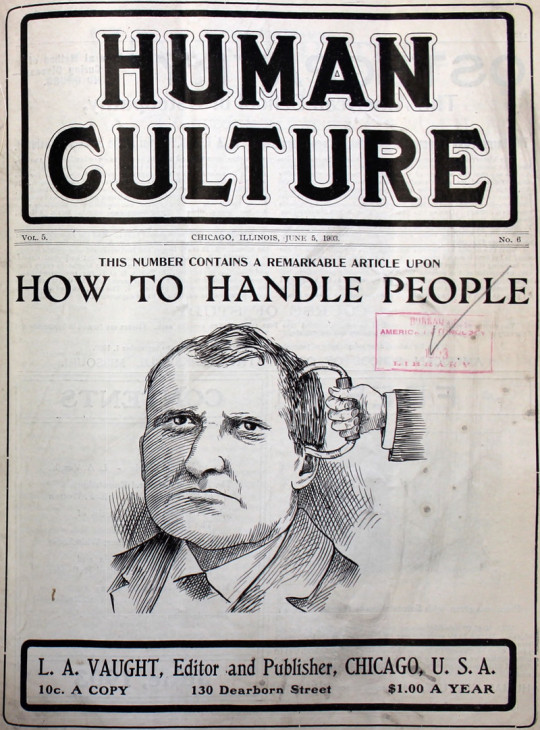
Source details and larger version.
You might flip: vintage magazine covers.
115 notes
·
View notes
Photo
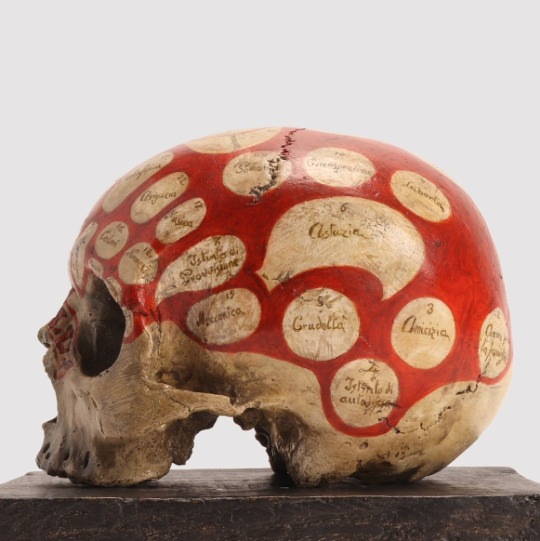
A plaster sculpture depicting a phrenological skull according to the theory of Franz Joseph Gall (1758–1828).
98 notes
·
View notes
Text
Tumblr:
"Sorry, porn and anything mildly NSFW (and also queer content but ssshhh it's totally not on purpose we promise) is banned, and we're gonna take down your post / nuke it to hell if you even have a nipple (or if you're trans but ssshh again it's not on purpose don't accuse us of being transphobic)
Also Tumblr:
[ does nothing about the billions of porn bots that follow ppl, TERFs, the pro-ana community, neo-Nazis spreading phrenology and antisemitism again, etc - oh, and does nothing about Tumblr Live which a.) Hosts a bunch of porn videos and B.) Collects your data ]
#tumblr#tumblr live#rant#vent#tw pro ana#tw ed ment#transphobia#antisemitism#antisemitism tw#terfs fuck off#terf ment#tw neo nazi#nazi ment#phrenology
17 notes
·
View notes